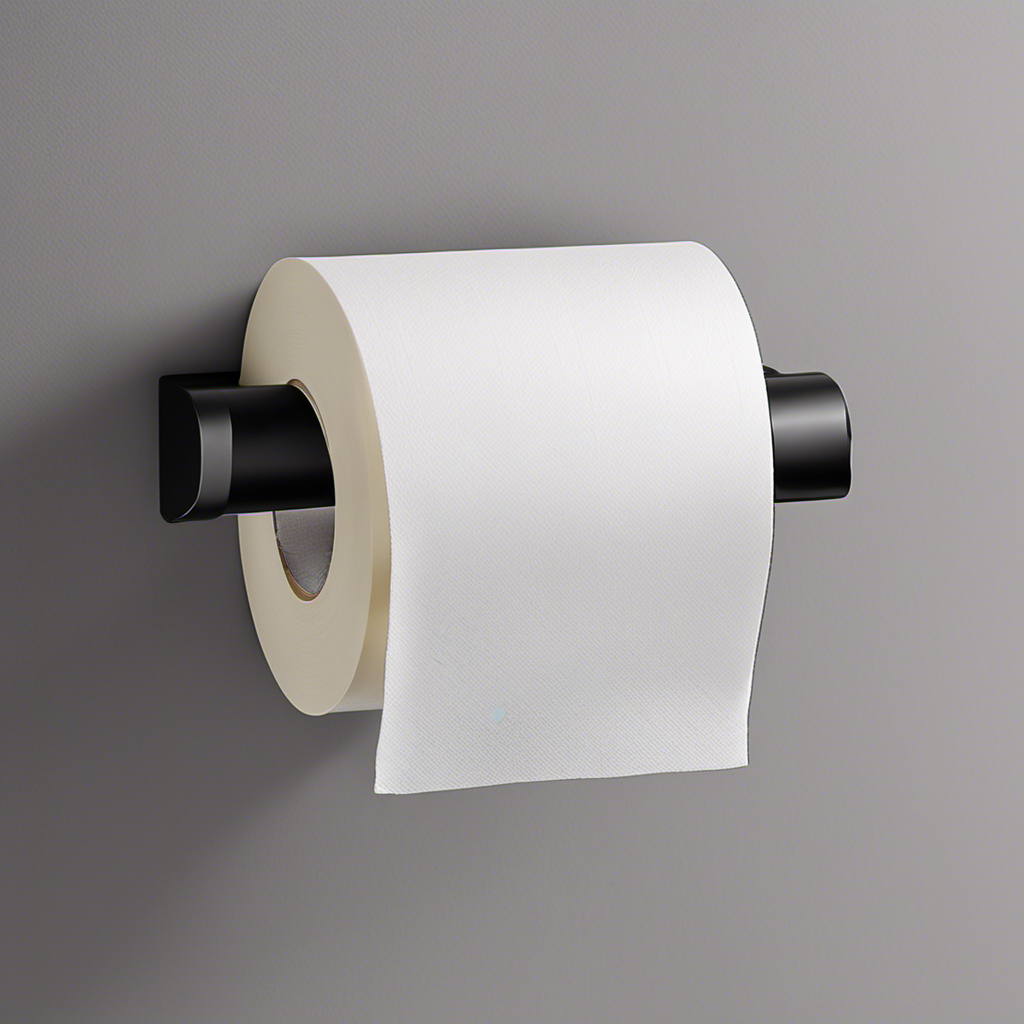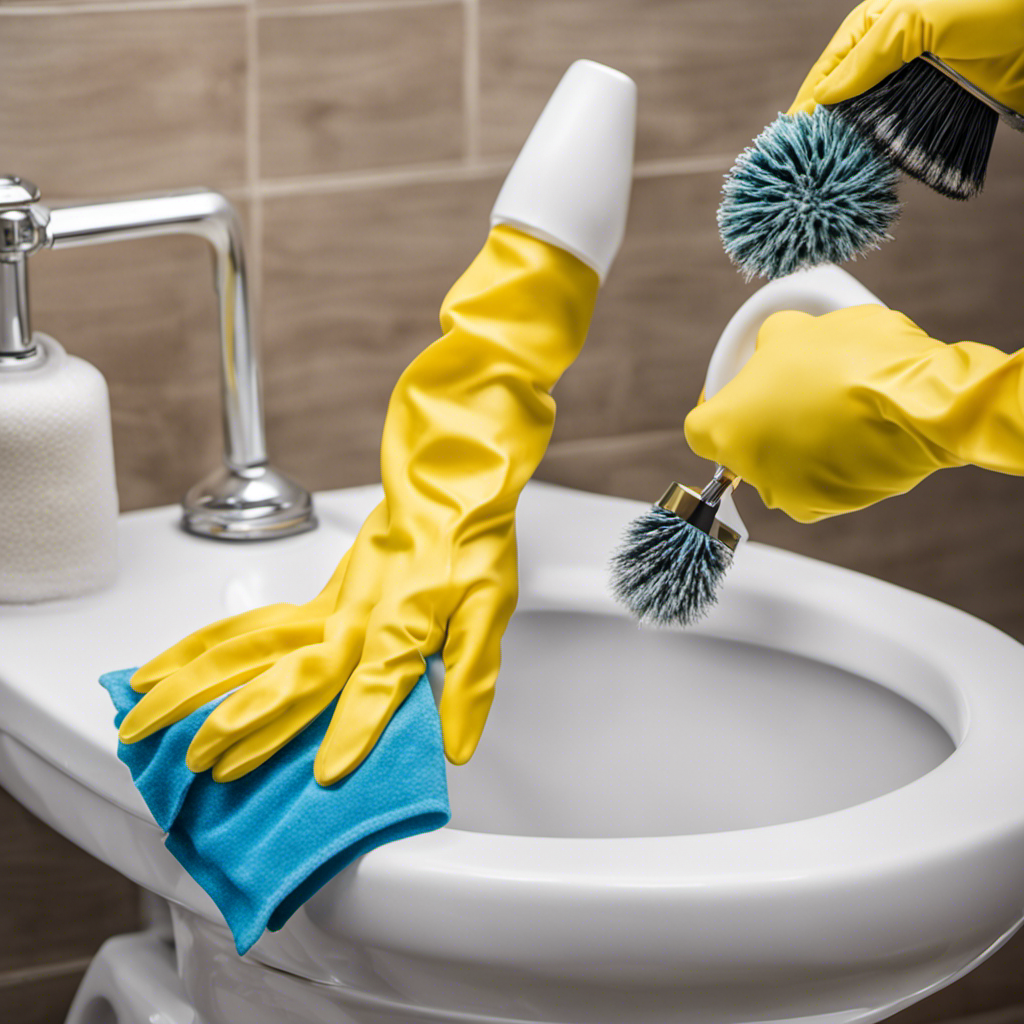I’ve always believed in the power of self-sufficiency, especially when it comes to the essentials. That’s why I decided to embark on a journey to make my own toilet paper.
It may sound unconventional, but trust me, it’s entirely possible and surprisingly rewarding. In this article, I’ll guide you through the step-by-step process of creating your own rolls of soft, durable toilet paper.
So, grab your materials and let’s dive into the world of DIY toilet paper making.
Key Takeaways
- Wood pulp is the primary material used in making toilet paper.
- Water and chemicals such as bleach and softeners are used to create and enhance the quality of the toilet paper.
- Sustainable sourcing of wood pulp and responsible water usage can minimize the ecological footprint of toilet paper production.
- Alternative materials like recycled paper or bamboo fibers can be used for an eco-friendly option, reducing waste and promoting sustainability.
Materials Needed for Making Toilet Paper
To make toilet paper, you’ll need materials like wood pulp, water, and chemicals. Sourcing materials for toilet paper production is a crucial step in the manufacturing process.
Wood pulp, derived from trees, is the primary material used in making toilet paper. It is obtained through a process known as pulping, where the wood is broken down into fibers.
Water is another essential ingredient, used to hydrate the wood pulp and create a pulp suspension.
Additionally, chemicals such as bleach and softeners are added to enhance the quality and texture of the toilet paper.
However, it is important to consider the environmental impact of these materials. Sustainable sourcing of wood pulp and responsible water usage can help minimize the ecological footprint of toilet paper production.
Step-By-Step Process of Making Toilet Paper
The first step in the process is gathering all the necessary materials. To make your own toilet paper, you will need recycled paper, water, a blender, a rectangular mold, a cloth, and a rolling pin.
Begin by tearing the recycled paper into small pieces and soaking them in water for a few minutes. After that, transfer the soaked paper into a blender and blend until it forms a smooth pulp.
Next, pour the pulp into the rectangular mold lined with a cloth. Spread it evenly and press out any excess water using a rolling pin. Allow the pulp to dry completely, which may take a few hours or even overnight.
Once dry, remove the paper from the mold and cut it into desired sizes. Troubleshooting problems may include adjusting the consistency of the pulp or the drying time. For eco-friendly alternatives, consider using tree-free materials such as bamboo or hemp.
Transitioning to the next section, here are some tips and tricks for perfecting your homemade toilet paper.
Tips and Tricks for Perfecting Your Homemade Toilet Paper
For a better result, you should consider adjusting the consistency of your homemade toilet paper pulp.
When making your own toilet paper, it’s important to use alternative materials that are eco-friendly. Instead of using traditional wood pulp, you can try using recycled paper or bamboo fibers. Recycled paper is a great option as it reduces waste and promotes sustainability. Bamboo fibers are also a popular choice due to their fast-growing nature and minimal environmental impact.
These alternative materials not only help in reducing deforestation but also provide a softer and more absorbent toilet paper.
By using eco-friendly options for homemade toilet paper, you can contribute to a greener and healthier planet.
Now, let’s move on to troubleshooting common issues in toilet paper making.
Troubleshooting Common Issues in Toilet Paper Making
One common issue in homemade toilet paper production is when the pulp becomes too watery, resulting in a weak and flimsy end product. This can happen if there is too much water added during the pulping process or if the pulp isn’t properly drained before forming the sheets.
To troubleshoot this problem, you can try adding less water to the pulp mixture and ensuring that the pulp is well-drained before pressing it into sheets. Another technique is to increase the drying time to allow more moisture to evaporate, resulting in a stronger final product. Additionally, adjusting the ratio of recycled paper to virgin fibers can also help improve the strength of the toilet paper.
By addressing these common problems and applying these troubleshooting techniques, you can create a high-quality homemade toilet paper that is both durable and effective.
In the next section, we will explore additional ideas for customizing your homemade toilet paper.
Additional Ideas for Customizing Your Homemade Toilet Paper
If you’re feeling creative, you can personalize your homemade TP by adding scents or colors. When it comes to adding alternative patterns to your toilet paper, you have a few options.
One method is to create your own design by using stamps or stencils. Another option is to purchase patterned tissue paper and layer it between the toilet paper sheets during the manufacturing process.
As for natural dye options, you can experiment with various plant-based materials. For example, beetroot can be boiled and strained to create a vibrant pink dye, while turmeric can be used to achieve a warm yellow color. Other options include using spinach for green, blueberries for blue, and coffee for a natural brown hue.
Just make sure to follow proper safety precautions when handling and using dyes.
Frequently Asked Questions
Can I Use Any Type of Paper to Make Toilet Paper?
Yes, you can use any type of paper to make toilet paper. However, it’s important to consider recycling options and the environmental impact. Recycling paper helps conserve resources and reduce waste.
How Long Does It Take for Homemade Toilet Paper to Fully Dry?
The drying process for homemade toilet paper depends on various factors. Factors like humidity, temperature, and thickness of the paper can affect the drying time. It’s essential to ensure proper drying before use.
Is It Safe to Use Homemade Toilet Paper on Sensitive Skin?
Using homemade toilet paper on sensitive skin can have benefits, like knowing the ingredients. However, precautions should be taken, such as ensuring proper sanitation and avoiding harsh materials. Alternative options for sensitive skin include hypoallergenic commercial toilet paper or bidets.
Can I Add Essential Oils or Scents to Customize My Homemade Toilet Paper?
Yes, adding essential oils to homemade toilet paper can be a great way to customize your experience. Not only do they provide a pleasant scent, but they can also have various benefits for your skin and overall well-being.
How Do I Store Homemade Toilet Paper to Ensure Its Longevity?
To ensure the longevity of homemade toilet paper, it is crucial to store it properly. Here are some tips: store in a cool, dry place; protect from moisture and sunlight; use airtight containers.
Conclusion
In conclusion, making your own toilet paper is a rewarding and fulfilling process. By following the step-by-step guide and using the necessary materials, you can create high-quality toilet paper that meets your specific needs.
Remember to pay attention to the tips and tricks mentioned to ensure the best results. In case of any issues, the troubleshooting section will come to your rescue.
So why settle for store-bought when you can have personalized, customizable toilet paper that is as soft and strong as you desire? It’s time to embark on this journey and take control of your bathroom experience.










